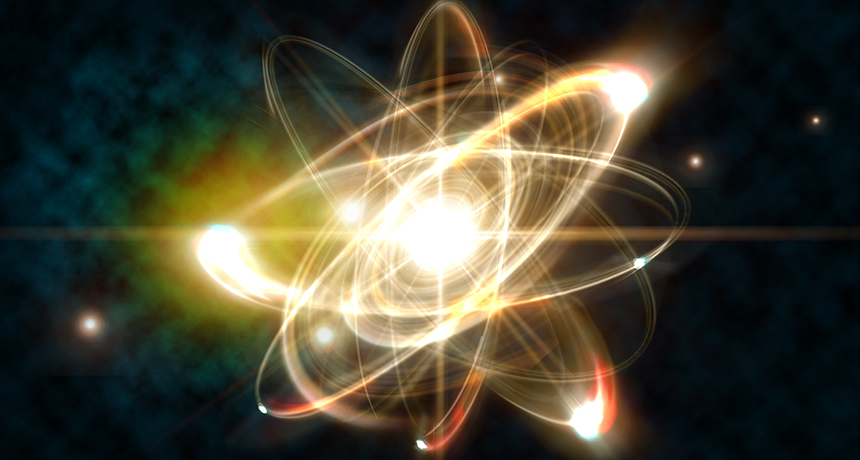The dream of unlimited energy has captivated human imagination for centuries. From the ancient myths of perpetual motion to the modern ambition of harnessing the sun and wind, humanity has long sought a source of power that is both inexhaustible and clean. Unlike fossil fuels, which pollute and deplete, renewable energy promises not only sustainability but the possibility of a future where energy scarcity is a concept of the past. The allure of unlimited renewable energy is not simply practical—it is profoundly transformative, offering hope for environmental restoration, economic stability, and a redefinition of human progress.
Yet achieving such a vision is not a matter of wishful thinking. It requires a deep understanding of the fundamental principles that govern energy in our universe, from the behavior of photons in solar cells to the intricate dynamics of wind and ocean currents. It demands mastery over materials science, thermodynamics, quantum mechanics, and electrical engineering. Beneath the surface of everyday solar panels and wind turbines lies a complex scientific landscape, one where breakthroughs can turn the seemingly impossible into reality.
The Hidden Potential of the Sun
No source of renewable energy captures the imagination like the Sun. Every hour, the Earth receives more solar energy than humanity consumes in an entire year. Yet converting this energy efficiently and sustainably has proven a formidable challenge. Traditional photovoltaic cells, while increasingly common, operate with inherent limitations. Conventional silicon-based panels typically convert only 15 to 22 percent of sunlight into usable electricity. The remainder is lost as heat or reflected away.
The secret science behind unlocking unlimited solar energy lies in understanding light at a quantum level. Photons, the particles of light, interact with matter in ways that classical physics cannot fully explain. Researchers are exploring multi-junction cells, where layered semiconductors capture different wavelengths of light, dramatically improving efficiency. Advanced materials such as perovskites, a class of crystalline compounds, exhibit remarkable light absorption and charge mobility, potentially revolutionizing the economics of solar energy. Even more tantalizing is the prospect of quantum dot solar cells, which manipulate the behavior of electrons and photons at the nanoscale, promising efficiencies that could theoretically surpass 50 percent.
Beyond the material itself, the geometry and arrangement of solar collectors are critical. Concentrated solar power systems use mirrors or lenses to focus sunlight onto a small area, achieving temperatures high enough to drive turbines directly. These systems exploit thermodynamic principles in extreme conditions, demonstrating that solar energy can be both abundant and dense enough to rival traditional fossil fuels. Every breakthrough in this field brings humanity closer to an era where the Sun’s immense power can be tapped without restraint, a renewable source as close to “unlimited” as physics allows.
Harnessing the Breath of the Planet
While the Sun provides the raw energy, wind offers a complementary pathway to abundance. Wind energy is a direct manifestation of atmospheric dynamics—the unequal heating of the Earth’s surface drives currents of air that can be captured and converted into electricity. Unlike fossil fuels, wind energy does not rely on combustion or chemical reactions. Its power is purely kinetic, a dance of molecules orchestrated by the laws of fluid dynamics.
The science behind wind energy is deceptively intricate. Turbines convert the kinetic energy of moving air into mechanical rotation, which is then transformed into electricity through generators. However, efficiency depends on the interplay of blade design, rotor speed, and air density. Engineers study turbulence, vortex formation, and aerodynamic drag with the precision of a mathematician to extract maximum energy. Offshore wind farms, riding the constant gusts over the open ocean, exploit even more sophisticated insights, such as the vertical stratification of wind speeds and the mitigation of wake effects, where upstream turbines can reduce the energy available to those downstream.
Recent advances in airborne wind energy systems promise to unlock energy at altitudes unreachable by conventional towers. Kites or drones tethered to the ground can tap into the stronger and more consistent winds at hundreds of meters above the surface. These systems operate as dynamic energy harvesters, responding in real-time to changing wind patterns. By combining atmospheric science with robotics and control theory, engineers are transforming the chaotic flow of air into a predictable, almost inexhaustible source of power.
Oceans: The Untapped Reservoir
Beneath the waves lies a vast reservoir of kinetic and thermal energy, often overlooked in discussions of renewables. Oceans cover more than 70 percent of the planet’s surface, and their currents, tides, and temperature gradients hold energy equivalent to thousands of nuclear reactors. Tidal energy, driven by the gravitational interplay between the Earth, Moon, and Sun, offers predictability unmatched by solar or wind. Ocean thermal energy conversion exploits the difference between warm surface water and cold deep water, using heat engines to produce electricity with astonishing efficiency.
The science of ocean energy is a study in fluid mechanics and thermodynamics. Engineers must contend with the immense pressures, corrosive saltwater, and mechanical stresses of the marine environment. Devices such as tidal turbines, oscillating water columns, and salinity gradient generators rely on precise calculations of fluid flow, resonance, and material strength. Researchers are also investigating wave energy converters, which translate the rhythmic rise and fall of the ocean into usable electricity. Each system is a symphony of physics, engineering, and materials science, working together to unlock a reservoir of energy previously inaccessible.
The Promise of Fusion: Mimicking the Stars
While solar, wind, and ocean energy draw on forces readily available on Earth, nuclear fusion offers a more audacious vision: harnessing the power of the stars themselves. Fusion, the process that fuels the Sun, occurs when atomic nuclei collide at immense temperatures and pressures, releasing energy through the conversion of mass into light and heat. Unlike fission, which splits heavy atoms, fusion produces minimal radioactive waste and relies on abundant isotopes like deuterium from seawater.
The challenge of fusion is not one of principle but of execution. Containing a plasma at millions of degrees Celsius requires magnetic confinement, inertial compression, or novel approaches such as stellarators and tokamaks. The physics of plasma behavior is extraordinarily complex, involving instabilities, turbulence, and nonlinear feedback loops. Yet recent breakthroughs, including sustained net energy gain in experimental reactors, suggest that fusion may move from theoretical aspiration to practical reality within decades. The implications are staggering: a single gram of fuel could theoretically provide energy equivalent to tons of coal, offering the closest approximation to “unlimited” power humanity has ever encountered.
Materials: The Silent Revolution
The quest for unlimited renewable energy is not solely about harnessing natural forces—it is also about the materials that mediate these transformations. Advanced conductors, superconductors, and semiconductors allow electricity to move with minimal loss. Nanostructured surfaces enhance light absorption or reduce friction. Phase-change materials store energy efficiently, bridging the intermittent nature of solar and wind power.
Materials science is, in many ways, the unsung hero of the renewable revolution. Without it, solar panels would remain inefficient, wind turbines brittle, and fusion reactors impossible. The interplay of atomic structure, electron mobility, and chemical stability determines whether a device can operate reliably, economically, and at scale. By manipulating matter at the atomic and molecular levels, scientists are creating technologies that turn the dream of abundant energy into a feasible reality.
Energy Storage: Capturing the Infinite
Harvesting renewable energy is only half the challenge. The Sun does not always shine, and the wind does not always blow. Energy storage systems are essential to smooth out these fluctuations, converting intermittent energy into a reliable supply. Batteries, once limited in capacity and lifespan, are evolving rapidly. Lithium-ion technology dominates today, but future innovations in solid-state batteries, flow batteries, and metal-air systems promise greater energy density, faster charging, and longer durability.
Beyond batteries, thermal storage and mechanical systems such as flywheels and pumped hydroelectric storage provide alternative pathways. Thermal storage captures excess heat from concentrated solar power or industrial processes, releasing it on demand. Flywheels store kinetic energy in rotating masses, while pumped hydro uses gravity to convert excess electricity into potential energy, ready to be released when needed. Each system reflects a deep understanding of energy conservation, thermodynamics, and control engineering, revealing that storing power is as much a science as generating it.
The Integration Challenge
Unlimited renewable energy is not achieved through individual technologies alone. It requires a holistic approach: smart grids, predictive analytics, and real-time monitoring. Electrical grids must become adaptive networks, capable of balancing supply and demand instantaneously. Machine learning and artificial intelligence are increasingly deployed to forecast weather patterns, optimize turbine orientation, and manage energy flow across thousands of interconnected devices.
The science of integration transforms the energy system into a living organism, responsive and resilient. By linking generation, storage, and consumption through data-driven networks, humanity can maximize the utility of every photon, gust, and wave. The dream of unlimited renewable energy becomes less about a single breakthrough and more about the orchestration of countless scientific insights across physics, engineering, and computer science.
Environmental and Social Implications
The pursuit of unlimited renewable energy is not merely a technical challenge—it is a moral imperative. Fossil fuels have altered the climate, polluted the air and water, and driven geopolitical conflict. Renewable energy offers a path to reduce humanity’s ecological footprint while democratizing access to power. In remote regions, solar and wind can provide electricity where centralized grids are impractical, improving education, healthcare, and economic opportunity.
Yet this transformation requires careful stewardship. Large-scale deployment of renewable infrastructure must respect ecosystems, water resources, and local communities. The science of sustainability extends beyond energy conversion to encompass life-cycle analysis, resource efficiency, and ecological impact assessment. Only by integrating environmental science with engineering can the promise of unlimited renewable energy become both real and responsible.
The Philosophical Dimension
Unlimited energy forces humanity to confront profound questions. How will access to abundant power reshape society, economy, and culture? Can human ingenuity, when coupled with the forces of nature, create a civilization free from scarcity without creating new forms of imbalance? The science of energy is intertwined with ethics, economics, and philosophy, challenging us to imagine not only new technologies but new ways of living.
At its heart, the pursuit of unlimited renewable energy reflects a uniquely human trait: the desire to transcend limitations. It is a quest to harness the invisible forces of the universe, to convert sunlight, wind, and water into the lifeblood of civilization. And as our understanding deepens, we realize that the boundaries of possibility are determined not by nature but by the breadth of our imagination and the rigor of our science.
Conclusion: Toward an Infinite Horizon
The science behind unlimited renewable energy is a tapestry of interconnected discoveries, spanning quantum mechanics, fluid dynamics, materials science, and computational intelligence. It is a story of human curiosity applied to the forces of nature, of patience, creativity, and relentless experimentation. Each photon captured, each turbine turned, each plasma confined is a step toward a future where energy is no longer a constraint but a foundation for growth, equity, and environmental harmony.
The horizon of unlimited energy is not a distant fantasy—it is the inevitable convergence of knowledge, innovation, and human will. As we continue to unlock the secrets of the Sun, the wind, the ocean, and the atom, we move closer to a world where scarcity is replaced by abundance, and where the only limit to what humanity can achieve is the scope of our imagination. The universe offers its energy freely; it is up to us to meet it with the science, wisdom, and courage to turn possibility into reality.






